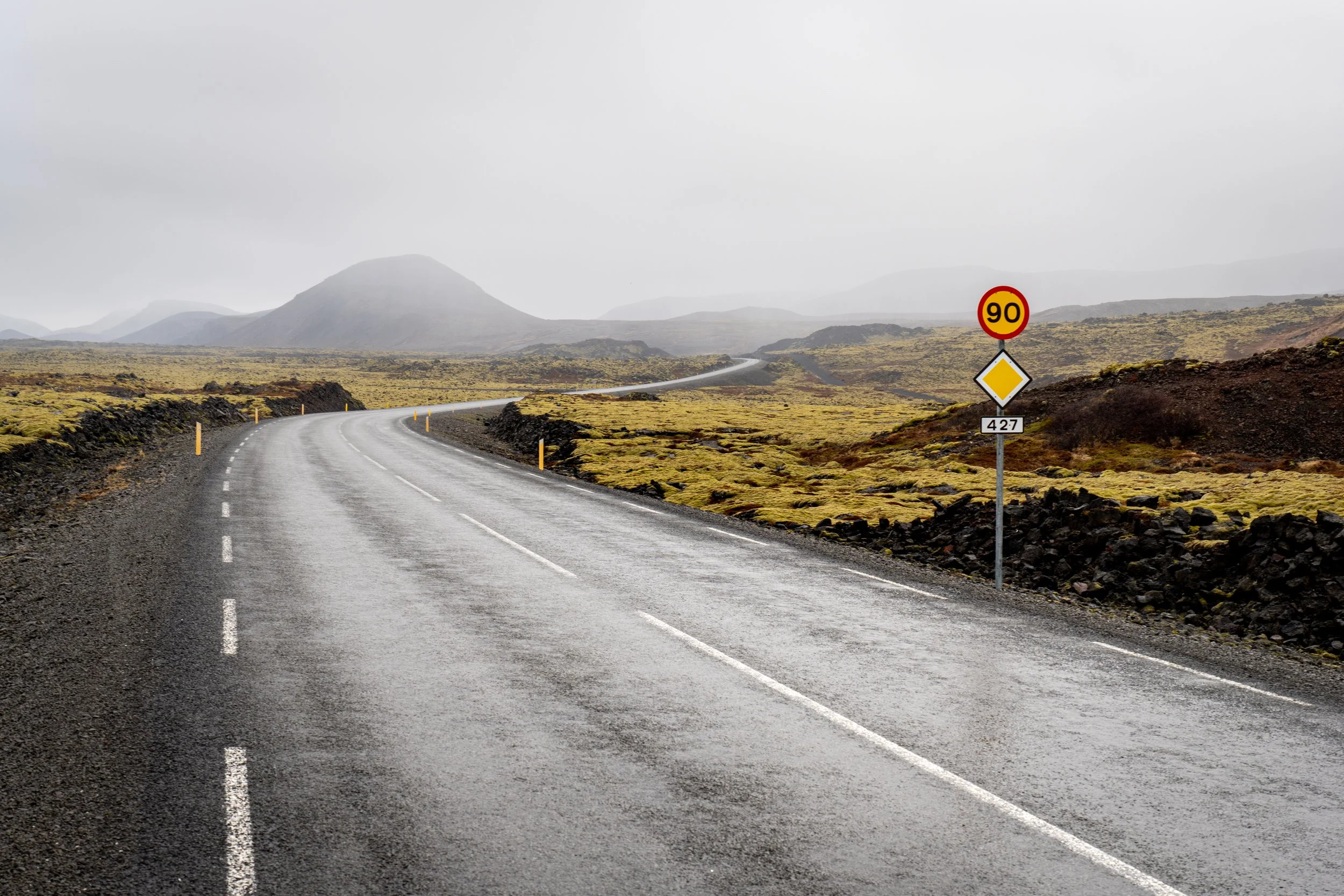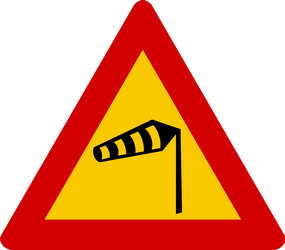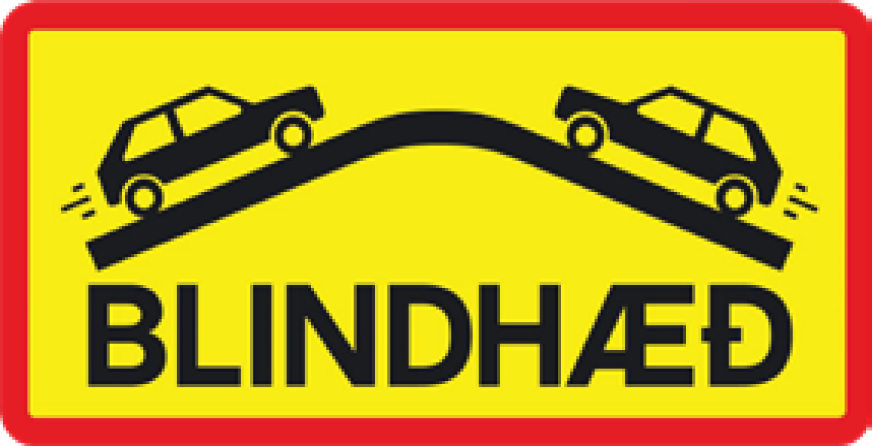Driving in Iceland
can be very dangerous for various reasons.
Please drive safely and maintain your attention on driving at all times.
Are you driving an electric car? Click here
Driving in Iceland brochures : English, German, French, Spanish & Chinese
We strongly recommend reading also the Safe Travel website, which gives a good overview of how to drive in Iceland: https://safetravel.is/driving
This short video covers nearly everything you need to know about driving in Iceland.
For more details on Icelandic traffic signs and other useful driving tips, please scroll down for the information provided below the video.
Hold the doors
Please hold onto your doors when opening.
Due to strong winds, doors can often fly open and this is the most common cause for damage. Make sure to hold onto the door handle when entering and exiting the car.
Roundabouts
In Iceland the inner circle normally has all priority.
If not leaving the roundabout in the first exit, stay on the inner (left) lane.
Icing on the roads
The roads can be icy on spots and need the full attention of the driver at all times.
Please beware of the temperature outside and always drive slowly as it will help you stay in control.
Sudden weather changes
Weather in Iceland can change rapidly,
from good to very poor.
Always check road conditions and weather forecast you can see it on following websites: road.is & safetravel.is
Speeding
In Iceland we have country roads, gravel roads, mountain roads and many blind spots.
The road system requires that drivers stay within the speed limits and are fully alert at all times. Speeding cameras in operation!
Distance between cars
You can avoid many incidents by leaving enough space behind the next vehicle on the road.
Wind & doors
The most common damage to cars among travellers in Iceland is when strong winds blow up the doors of the car.
To prevent this happening you need to:
• Open a window and check the direction and force of the wind before opening doors.
• Park the car so that the front part faces the wind.
• Always keep a firm grip on the door while it is open.
Narrow highland road
Meeting an oncoming car on
a narrow road
Highland roads are often very narrow, which makes it difficult to meet oncoming cars. Take special care when you meet oncoming cars, since often there are big rocks at the edge of the roads that can easily damage your car.
• Please note that renters are fully responsible for all underbody damage.
Blind hills or
’Blindhæð’
There are many blind hills on our roads, some of them without any markings at all. Many of them, however, are marked with the warning sign “OTHER DANGER” above the word “BLINDHÆД.
When approaching a blind hill, make sure to stay on the right side of the road and slow down, because you might meet a car without seeing it coming.
Unbridged Rivers
Please be careful when crossing, the highland rivers can be dangerous. Drive in the lowest gear and drive slowly to prevent water from harming the engine.
• The renter is fully responsible for all damage caused in this situation
End of paved road
When you see this sign there is an unpaved road ahead: PLEASE SLOW DOWN. If you drive too fast onto a gravel road and the car starts to turn, don’t panic and steer the car while braking.
Lights on at all time
In Iceland, it is a legal requirement that vehicle headlights be turned on at all times while driving. This applies both during the day and at night, regardless of weather or visibility conditions.
Many modern cars are equipped with an automatic light mode that adjusts the headlights based on ambient light levels. However, drivers should always double-check that this setting is enabled, as the lights may not come on automatically in all situations, particularly during bright but cloudy conditions. If your car does not have automatic headlights, make sure to manually switch them on every time you start driving.
Snow & Ice
Driving in snow or icy conditions can be dangerous, especially when a thin layer of ice forms on the road. To stay safe in such conditions, you should:
• Drive slowly and avoid any sudden or sharp turns.
• Brake gently and allow extra time to stop safely.
• Watch for black ice, especially in spring and autumn when it can be nearly invisible.
Speed driving
Icelandic roads are not designed for high-speed driving, and conditions can change quickly due to weather, road surface, or limited visibility. Even on paved roads, the terrain may be uneven or narrow, and gravel roads are common in rural areas, requiring extra caution.
The maximum permitted speed on Icelandic roads is 90 km/h under ideal conditions, but in many places, especially on gravel or winding roads a lower speed is more appropriate for safety.
It’s important to note that speeding fines in Iceland are very high, and being caught exceeding the limit can result in a significant expense. To avoid unnecessary risk and penalties, always observe posted speed limits and adjust your driving speed based on road and weather conditions.
Sandstorm
Please be aware that windy and dry conditons increase the possibility of damage to the car. Some areas of Iceland have lots of loose sand or ashes that easily carry in the wind. Avoid driving in such areas when it’s windy. However, if you choose to, you can minimize the risk of damage by driving slowly.
• Please note that you can buy a specific insurance to lower the excess in case of such damage.
Always wear seatbelts
In Iceland, it is a legal requirement for all drivers and passengers to wear seatbelts at all times, regardless of whether they are seated in the front or back of the vehicle. This rule applies to both short and long journeys, in cities and in the countryside.
Wearing a seatbelt greatly reduces the risk of serious injury or death in the event of an accident. Even at low speeds, collisions can result in significant force, and seatbelts help keep occupants securely in place. Children must also be properly secured using child safety seats appropriate for their age and size.
Failing to wear a seatbelt can result in fines, and more importantly, puts everyone in the vehicle at greater risk. Always buckle up before driving and make sure all passengers are safely secured as well.
Gravel Roads
Driving on a gravel road can be similar to driving on an icy road. Please note that the maximum speed on gravel roads is 80 km/hour in the best of circumstances. When you pass another car, please slow down and pull out to the side of the road.
• Take special care, the edges of these roads are more slippery because of loose gravel.
Single-lane bridges
Many bridges in Iceland, especially in rural areas, are single-lane bridges, meaning that only one vehicle can cross at a time. These are common on the Ring Road and other major routes, and it’s important for drivers to be cautious and considerate when approaching them.
When you see a single-lane bridge ahead, slow down and check for oncoming traffic before proceeding.
In general, the vehicle that reaches the bridge first has the right of way, but it’s always best to make eye contact with the other driver or flash your headlights to indicate your intentions.
Approaching too quickly or assuming right of way can lead to dangerous situations, especially in poor visibility. Drive slowly and remain alert, especially in winter conditions when stopping distances are longer and traction is reduced.
Animals
Sheep, horses and other animals roam free in many areas of Iceland.
Please drive carefully where animals are close to the road as they could easily run in front of your car.
Off-road
We care very deeply for our beautiful landscape, so please show the highest respect for the Icelandic environment. It is strictly forbidden to drive off-road. Such driving results in serious damage to sensitive vegetation, which may take nature decades to repair.
Highland
Icelandic highland roads Kjalvegur and Kaldidalur, along with all roads marked as F-Roads, are not suitable for passenger cars. Only 4x4 jeeps are allowed on these roads.
Drivers who are found to have traveled on these roads can expect very high fines.
Icy conditions
Ice and/or snow on the road can be dangerous. Drivers often react the wrong way in these conditions and accidents may occur. Ice on the road can be really tricky to recognize. Here, we will cover a few details that could help you notice if there might be ice on the road.
Landscape: The landscape can have its effects on the road. If the sky is clear at night it’s more likely that the roads are icy, because it’s much colder outside than if it was cloudy.
Near sea or water: In a few places in Iceland the road lies near the sea or water. When the road is so close to the sea or water, a sly ice can form on the road. The reason for this is that the humidity is higher than usual and if it’s cold outside, ice can form on the road.
Shelter: If the road lies where it’s hard for the wind to get to it, e.g. through woods, cliffs or other landscape that can provide shelter, you should drive carefully. When the winter is near or coming to an end places like these can have icy roads, especially late at nights.
Thermometer in the car: In most cars there is a thermometer that can give you a rough idea about the temperature outside. But this is only a rough idea, and it’s not good to count on the thermometer because the road can be colder than the thermometer says. If the thermometer shows 4-5°C and the weather is still, it’s a good reason to pay close attention to the conditions on the road, especially if the road is wet.
The higher you get the lower the temperature gets: If you are driving on the highway and there is no ice on the road, it’s possible that the mountain roads have ice on them. Places like Öxnadalsheiði in the north, Hellisheiði between Reykjavík and Hveragerði or Holtavörðuheiði in the south are known to have bad weather conditions even though the weather in town is good.
Wintertime in Iceland is mysterious. It can, in only one hour, change from a sunny
day to a blistering storm. So drive carefully and have a great vacation in Iceland.
We would like to emphasise to you a few details regarding the temperature outside.
When the thermometer in the car tells you that the temperature outside is below
4-5°C you should know that the road temperature is most likely lower. This means that ice forms more easily on the road, especially if the road is wet.
There are 6 types of icy conditions and we will start with the first four types that are easily recognized;
1. Héluhálka (White frost): When the temperature on the road goes below zero and
the humidity in the air rises, white frost can form on the road.
2. Snjór (Snow): When there is snow on the road, the road is most likely icy, so drive carefully.
3. Flughálka (Extreme slippery): When the road temperature is at freezing point and it rains, it gets extremely slippery, especially when it’s windy outside.
4. Hrímþoka (Freezing Fog): When people talk about Freezing Fog they mean that when cold raindrops from the fog land on the road and freeze. It’s even possible that the fog will freeze on your front window so make sure that there is an ice scrape in the car.
Then there are two types that are harder to recognize;
5. Glerhálka (Black Ice): It can be hard to see when water freezes on the road, especially when the road’s temperature goes below zero. In these conditions it’s hard to see if the road is wet or icy because the road will glare in both conditions. When the temperature goes under below 4-5°C, it’s more likely that ice will form on the road.
6. Frostrigning (Freeze Rain): This type of ice is hard to recognize. The rain will freeze when it hits the cold road. We usually don’t know when the road temperature goes below zero degrees so when the temperature is 5°C or below, be careful.





















